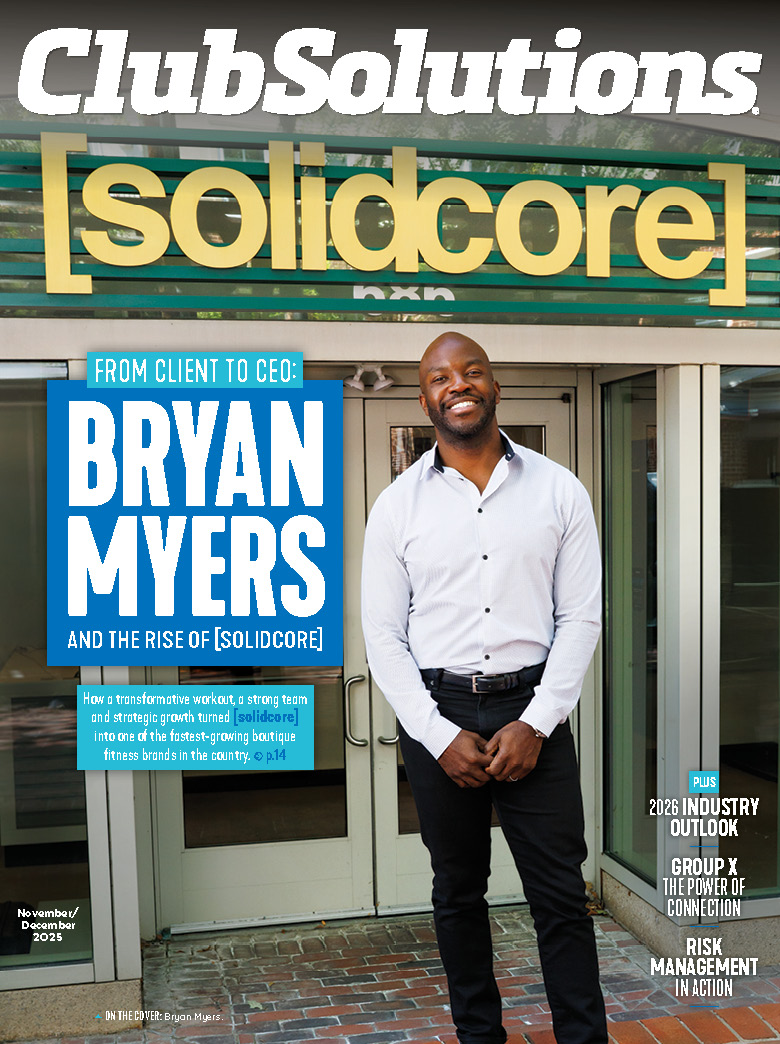The last article within this series discussing the sales process talked about the “question and answer” session. If you have not read the previous articles, I would suggest you read them here, here and here, before continuing on.
Last blog, our focus was on getting questions answered, in order to find the needs of the customer. Sometimes during the Q&A process, you’ll face objections from the member. An objection could go like this:
You: “Mr. Jones, I am going to take you on a tour of the club, but first I want to ask you a question. If I can show you the equipment that can take care of your needs, do you see any reason why you wouldn’t become a member of XYZ health club today?”
The response may be a direct, “I see no reason why I wouldn’t join if you can satisfy my needs,” or you may get, “I am just looking and I have to run this by my spouse.”
Do not attack the objection, just simply store it your cap. You will address it on the tour.
Start your tour by going to what’s most important to the customer. Don’t start in the café or the pool if that is not what they said was important to them. For example, if someone said they wanted to lose weight, you should take them to cardio, give them material on your weight loss program, or introduce the prospect to a trainer who specializes in weight loss. The goal is to satisfy the need first, before you give more information.
When you are showing off the cardio area (if the prospect is interested in weight loss, like 92 percent of all prospects), then talk about the benefits of doing cardio work. Talk about the fat-burning possibilities, metabolism and potential future success by the use of those machines. Always paint a picture of what they will look and feel like if they are consistent with their diet and their workouts. The goal is to create an image so clear that the prospect can actually see what they will look and feel like down the road. It’s that type of emotional commitment that makes prospects move from prospective clients to members.
Make sure you get the prospect on a machine. It’s critical that you involve all the senses. Get them to use the machine at the lowest level (he or she must be dressed appropriately). For example, let them try a treadmill. Show them how to hit start and increase the speed. If you accomplish that, then the person could come in tomorrow and hit start and increase speed and actually work out for a period of time without needing any assistance. That’s why I like to show two to three machines in cardio. Now that they are doing the exercise, they will start to see a sense of fulfillment; they will feel like everyone else, and will be proud that they are in the gym exercising. A great level of self-satisfaction starts to occur, because many people really don’t see themselves in a gym with others exercising. Now you start to ask a series of “yes” questions:
“Can you feel that in your legs?”, “Do you understand you are burning calories?”, “If you did this for 30 minutes a day do you think you would benefit?”, “If you did this three times a week for 30 minutes, you would begin to change your metabolism; isn’t that what you’re looking for?”
The art of getting prospects to say “yes” has tremendous benefits, and often gets prospects to continue the “yes” pattern all the way to the sale. The art of getting the prospect involved often leads to commitment. When the prospect is engaged, he or she won’t experience buyer’s remorse in the post-sale.
Okay, we are getting very deep in the process here. I am running out of space, so I will continue the next time. In my next article, we will continue with the tour, with the last part I refer to as the “value tour.”
Go get ‘em!
Chuck Hall is the executive director of Big Vanilla Athletic Clubs. He can be reached at Chall@bigvanilla.com.










